How to Attract and Convert Website Visitors through Content Marketing
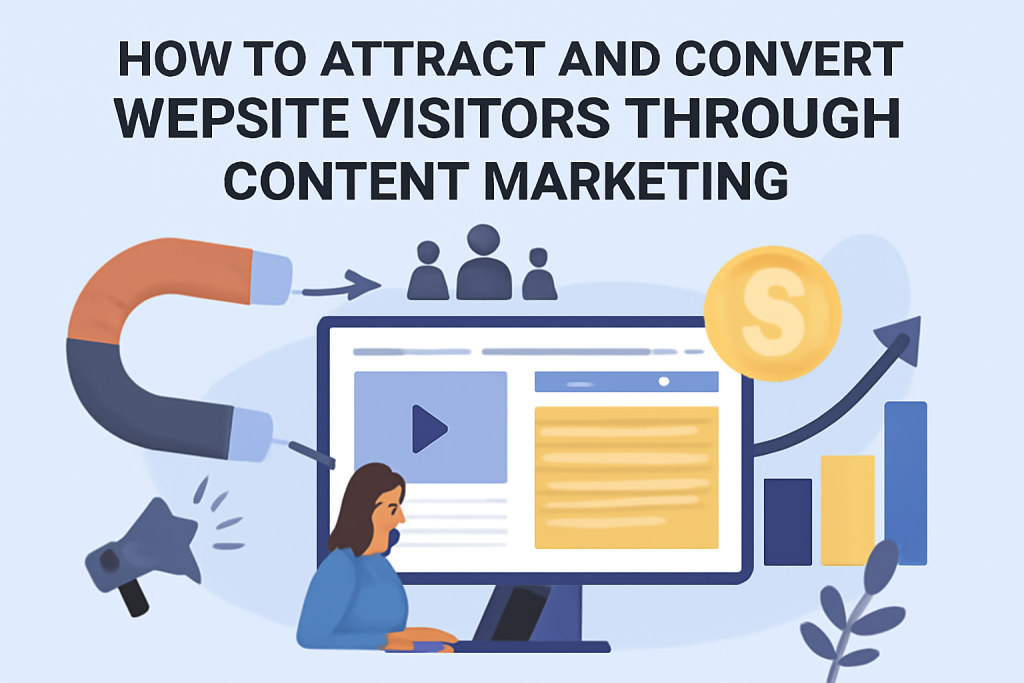
In the ever-evolving world of digital business, content isn’t just king—it’s your brand’s most reliable salesperson. At Speed Dot 360, we believe content marketing is not just a buzzword; it’s a strategic powerhouse. It acts as a bridge to seal the gap amid curiosity and conversion. From insightful blogs to interactive quizzes and storytelling-infused videos, great content draws people in and nurtures trust. If you’re struggling to turn traffic into paying customers, you’re not alone. But with the right approach—including targeted keyword research services—content marketing can help you create a funnel that not only attracts but also converts with purpose and precision. What Is Content Marketing and Why Does It Matter? Content marketing is the procedure of planning, creating, distributing, and managing content to reach your ideal audience and convert them into loyal customers. Instead of selling directly, content marketing focuses on providing value, solving problems, and building a relationship with your audience. This value-based approach is more effective than traditional advertising because people engage with brands that educate and inspire them, not just those who interrupt their feed with a product pitch. Mapping Content to the Buyer’s Journey Every piece of content should speak to a stage in your customer’s decision-making process. That’s why aligning your strategy with the buyer’s journey is crucial: This journey-based content strategy ensures you’re not just speaking to everyone but speaking to the right person at the right time, with the right message. Types of High-Converting Content Your content toolkit should be diverse. Here are the formats delivering results in 2025: SEO: Fuel for Your Content Engine You can write the most insightful blog post in the world, but if no one sees it, it won’t convert. This is where SEO optimization services come into play. From researching trending keywords to optimizing meta descriptions, every technical detail adds up. Start with effective keyword research services to find terms your ideal customers are actually searching for. Then, weave those keywords naturally into your content—headlines, subheads, body copy, and alt-text. And don’t forget about backlinks. Getting your content linked from high-authority websites signals credibility to search engines and boosts ranking power. Consider integrating link building services into your broader strategy. Attracting the Right Visitors: Proven Strategies Attracting traffic starts with visibility. Here are key ways to draw users to your website: Turning Traffic Into Leads Once visitors land on your site, your content’s job is far from done. It must inspire action. Use every interaction point as an opportunity to move users one step closer to becoming a lead or customer. The Power of Email Marketing Email marketing campaigns remain a powerhouse for nurturing leads over time. Use your newsletter to deliver handpicked blog articles promotional offers, or invite readers to upcoming webinars. Segment your list according to your user behavior or interests to personalize messaging and boost engagement. Combining smart email with content ensures your brand remains top-of-mind throughout the decision-making process. Brand Storytelling: The Emotional Connection People don’t just buy products—they buy stories, values, and experiences. Brands with compelling narratives cut through the noise and stay memorable. Invest in brand storytelling solutions that resonate with your audience. Your “why” matters. From an about page to customer testimonials, let your brand voice come alive. By weaving storytelling into your content—from blogs to videos—you humanize your message, making your business more relatable and trustworthy. Measuring What Matters You can’t improve what you don’t measure. Here are key metrics to track: Utilize tools like Google Analytics, HubSpot, and SEMrush to analyze performance and regulate your strategy accordingly. Branding & Strategy: The Foundation for Long-Term Growth Finally, don’t treat content marketing as a siloed effort. Your success hinges on a well-rounded approach that aligns with broader branding & strategy initiatives. Strategic alignment ensures every piece of content not only attracts but also reflects the values and vision of your business. Final Thoughts Content marketing in 2025 is about connection, credibility, and conversion. Whether you’re building blog funnels, running email marketing campaigns, investing in SEO optimization services, or crafting your brand narrative through brand storytelling solutions, remember: value-first always wins. At Speed Dot 360, we specialize in helping businesses create and execute data-driven content strategies that turn visitors into leads—and leads into loyal customers. Are you ready to grow your business with content that truly converts?
Checklist for Marketing Audit for Roofers: Boost Leads, Visibility & ROI
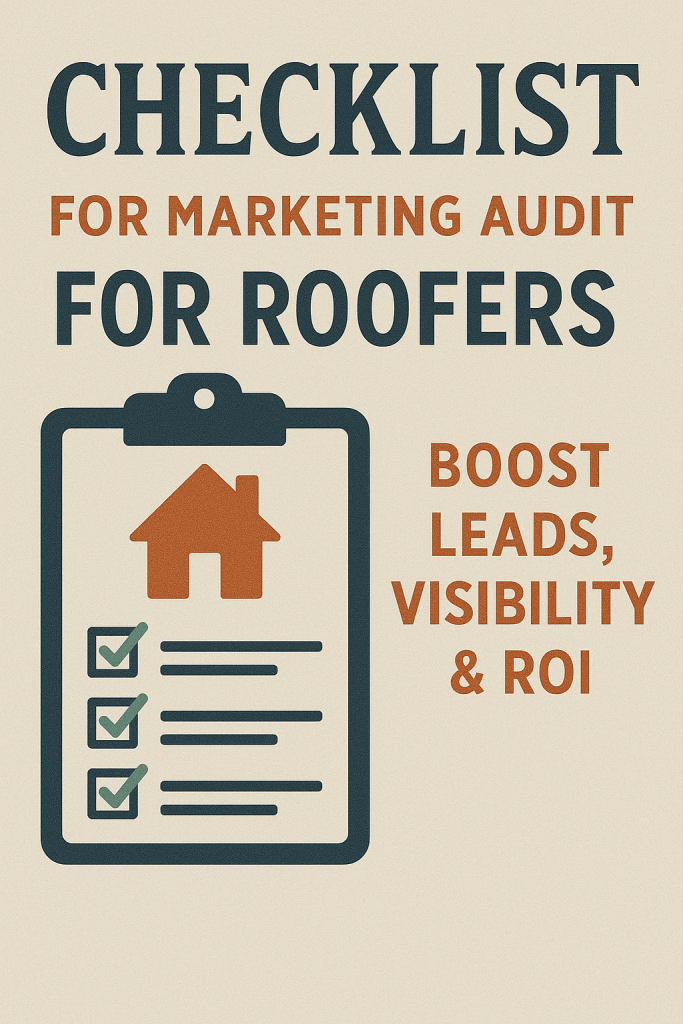
In today’s saturated digital landscape, roofing companies must do more than just “show up online.” To grow leads, close more jobs, and gain local dominance, you need a strategic and measurable approach. That’s where a well-structured marketing audit comes into play. Whether you’re working with a local SEO agency or managing marketing in-house, conducting a thorough audit will help identify gaps, enhance performance, and align your efforts with real business goals. This guide walks you through the essential checklist every roofer needs to evaluate marketing effectiveness—from SEO and content to advertising and conversion paths. 1. Define Your Marketing Goals Before diving into audits, establish clear, measurable goals. Are you trying to generate more leads? Rank higher on Google? Improve your online reputation? Your marketing audit will be most effective if it’s tied to specific KPIs such as: 2. Evaluate Your Branding and Online Reputation Your brand is your promise to customers—and consistency is key. Roofing is a high-trust industry. That’s why a strong, visible, and reputable brand is essential for converting leads. Audit checklist: ORM plays an important role in both customer conversion and SEO optimization services. 3. Conduct a Website & Technical SEO Audit Your website is your 24/7 salesperson. It needs to be fast, user-friendly, and built to convert. A technical SEO audit ensures that search engines can crawl, index, and rank your site in the best possible manner. Key technical areas to audit: Tools like Google Search Console, SEMrush, and Screaming Frog can help identify technical issues that hurt rankings. 4. Review On-Page SEO Strategies On-page optimization is where you control the keywords, structure, and relevance of your content. A strong on-page SEO strategy ensures your site speaks the language of users and search engines. Audit questions to ask: Well-executed on-page SEO strategies increase visibility, improve user experience, and ultimately drive more qualified traffic. 5. Strengthen Off-Page SEO Solutions While on-page SEO builds a solid foundation, off-page SEO solutions help you gain authority in Google’s eyes through backlinks, local citations, and brand mentions. Key off-page audit items: Use tools like Ahrefs or Moz to analyze your backlink profile and eliminate toxic links. 6. Analyze Content Marketing Effectiveness Roofers who educate their customers with useful content build trust and stay top-of-mind. Blog articles, FAQs, and project showcases can attract and nurture leads when optimized well. Content audit checklist: Great content also fuels your email, SEO, and social media strategies. It’s the engine that powers long-term growth. 7. Review Email Marketing Campaigns Not all roofing leads are ready to convert immediately. That’s why email marketing campaigns are so effective—they nurture leads over time and drive repeat business. Audit your email efforts by reviewing the following: Whether it’s a monthly newsletter or post-project follow-up, email keeps your brand top-of-mind and builds long-term customer loyalty. 8. Audit Paid Advertising & PPC Campaigns Are your Google Ads and Facebook campaigns bringing in qualified roofing leads—or just eating up your budget? Checklist for PPC audit: Properly audited and optimized ads can dramatically improve cost-per-lead and ROI. 9. Review Lead Tracking & CRM Systems It’s not enough to drive traffic—you need to know where leads come from and how they convert. A CRM ensures that no opportunity falls through the cracks. Audit points: Lead tracking and attribution help roofing contractors make informed budgeting decisions. 10. Evaluate Social Media Presence Social media might not be your #1 lead driver, but it’s essential for credibility and community engagement—especially for local roofers. Audit your social media by asking: Social proof matters. Homeowners want to see that you’re active, professional, and relatable. 11. Competitor Comparison Finally, compare your performance to the top roofing contractors in your area. This gives you a sense of where you stand—and where you can gain ground. Use competitive research tools to analyze: A marketing audit isn’t complete without knowing how you stack up. 12. Work With the Right Partner A DIY audit can go a long way—but having experts like SpeedDot360 in your corner takes things further. From professional technical SEO audits to custom email marketing campaigns, we help roofers uncover blind spots, fix inefficiencies, and scale with precision. Whether you’re a startup contractor or an established roofing company, SpeedDot360 offers tailored solutions for lead generation, local visibility, and long-term growth. Conclusion A successful roofing business starts with a powerful marketing foundation. By following this marketing audit checklist, you’ll uncover actionable insights to boost traffic, conversions, and your bottom line. Regular audits—ideally every 6 to 12 months—will keep your strategy fresh, focused, and ahead of the competition. Don’t just spend money on marketing. Make sure every dollar is working as hard as you do on the roof. Ready to unlock the full potential of your roofing marketing? Contact SpeedDot360 today for a free consultation and start building a smarter, results-driven marketing strategy.
Pros & Cons of Using Artificial Intelligence in Marketing

Artificial Intelligence (AI) has moved from being a futuristic concept to a vital part of marketing today. Businesses now use AI to automate tasks, analyze consumer behavior, and optimize advertising strategies—faster and smarter than ever before. With the help of artificial intelligence solutions, marketers can transform how they target, engage, and convert audiences. However, while AI brings undeniable benefits, it also comes with some limitations that every business should carefully consider. In this blog, we’ll explore the top advantages and disadvantages of using AI in marketing and help you decide how to integrate it into your own business strategy. Using Artificial Intelligence in Marketing 1. Advantage: Hyper-Personalization at Scale One of the most impactful uses of AI in marketing is its ability to give personalized experiences to customers at scale. This kind of personalization increases engagement, boosts ROI, and builds customer loyalty—especially when paired with automated tools like AI-driven CRMs or smart content platforms. 2. Disadvantage: Data Privacy and Ethical Concerns AI’s effectiveness hinges on data—but that data often includes sensitive customer information. To responsibly use AI, businesses must invest in transparent data practices and strong cybersecurity protocols. 3. Advantage: Enhanced Efficiency Through Automation AI can dramatically streamline repetitive tasks, saving both time and resources. This enables marketing team players to focus on strategy, creativity, and growth rather than executional bottlenecks. 4. Disadvantage: Loss of Human Touch While AI can automate and personalize, it lacks the nuance and empathy of human interaction. For best results, AI should enhance—not replace—human creativity and oversight. 5. Advantage: Predictive Analytics for Smarter Decisions AI systems can analyze trends and predict future outcomes based on historical data. When aligned with CRM integration services, predictive analytics can ensure both sales and marketing are working in harmony. 6. Disadvantage: High Initial Investment and Maintenance Advanced AI solutions may require significant up-front investment. Smaller businesses often benefit from third-party platforms or digital transformation consulting instead of building solutions from scratch. 7. Advantage: 24/7 Customer Service with AI Chatbots AI-powered chatbots are now a standard in digital marketing for good reason. Agencies offering chatbot development services enable businesses to keep communication open day and night—without overburdening staff. 8. Disadvantage: Lack of Contextual Understanding Chatbots and AI assistants often fail when conversations go off-script. A hybrid model—using chatbots for Tier 1 support and humans for escalation—tends to perform best. 9. Advantage: Scalable Content Creation AI writing tools can produce emails, headlines, product descriptions, and social media posts at scale. This scalability is ideal for large campaigns or brands using content-heavy strategies like automated email marketing campaigns or social posts. 10. Disadvantage: Content Overload and Duplication With so many companies using AI for content creation, there’s a risk of saturation. Always pair AI-generated content with human editing to maintain tone, voice, and authenticity. 11. Advantage: Real-Time Data and Performance Tracking AI can track campaign results in real time and adjust tactics accordingly. These capabilities are essential for fast-moving industries and help businesses remain agile. 12. Disadvantage: Complexity and Lack of Transparency Some AI tools, especially black-box models, don’t provide insight into how decisions are made. Whenever possible, choose AI systems with explainability or transparent frameworks. Final Thoughts: Is AI in Marketing Worth It? Yes—when used thoughtfully. Artificial Intelligence offers tremendous benefits to marketing teams: scalability, efficiency, insights, and automation. But the technology is not flawless. It requires oversight, strategic implementation, and a strong ethical foundation. For companies new to AI or seeking support, SpeedDot360 offers expert services, including: AI is a tool—and like all tools, its value depends on how you use it. Leverage it wisely, and it can become one of your most powerful marketing assets.
Exploring Cost Per Mille (CPM) | What Is CPM Bidding?
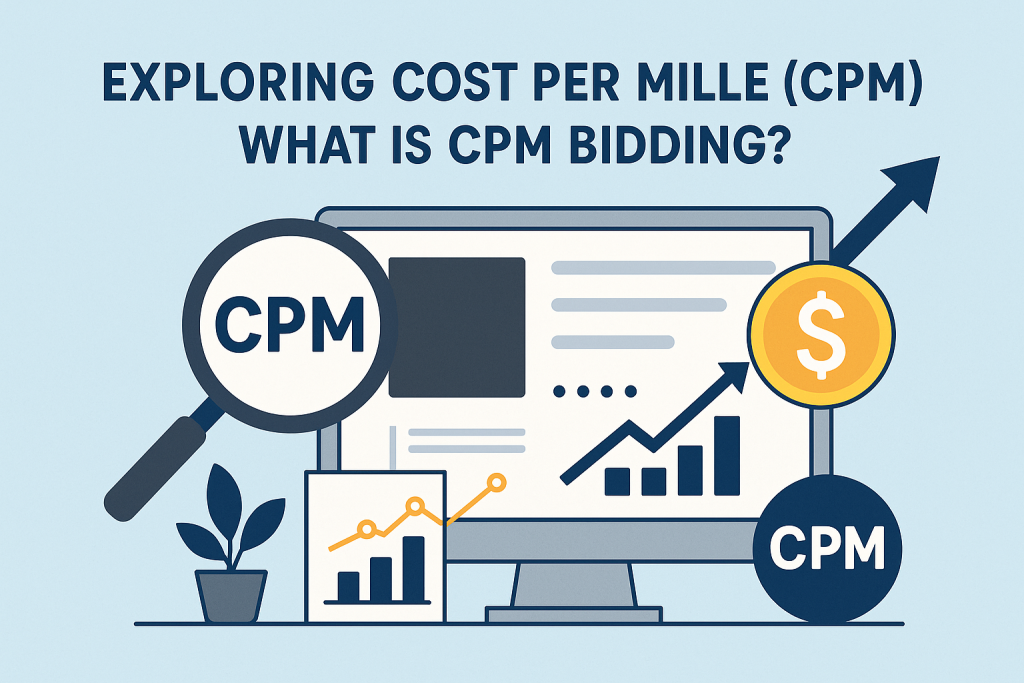
Picture this: your brand’s eye-catching ad pops up in front of thousands of potential customers. No clicks, no purchases—just eyeballs. You might think, “What’s the point? ” But in the world of digital marketing, visibility is currency, and impressions can be just as valuable as conversions—when you know how to leverage them. This is the essence of Cost Per Mille (CPM) advertising. It’s not about chasing clicks; it’s about planting seeds. Whether you’re launching a new product or boosting brand recall, CPM is the metric that tells you how much you’re paying to get your brand in front of 1,000 people. At Speed Dot 360, we’ve seen firsthand how strategic CPM campaigns—backed by smart PPC advertising management—can amplify digital presence and build long-term brand equity. But there’s more to CPM than just impressions. To use it effectively, you need to understand how it works, when to use it, and how to bid wisely. Let’s unpack everything you need to know about CPM and CPM bidding and how it fits into your broader digital strategy. What Is Cost Per Mille (CPM)? Cost Per Mille, commonly referred to as CPM, is an advertising metric that reflects how much an advertiser pays for 1,000 ad impressions. The term “mille” means “thousand” in Latin, which is why you’ll often see CPM discussed in reference to views, not clicks. If your CPM is $6, that means you’re paying $6 every time your ad is displayed 1,000 times, regardless of whether anyone engages with it. CPM is foundational in campaigns focused on brand awareness, not immediate conversion. This metric is widely used in display advertising, video ads, social media promotions, and mobile campaigns. It’s favored by marketers who want to make sure their brand is seen by the right audience—even if it doesn’t lead to an instant action. Why Is CPM Important in Digital Campaigns? While metrics like CPC (Cost Per Click) and CPA (Cost Per Acquisition) get most of the attention for conversion-focused efforts, CPM is the go-to for visibility. It supports the top of the funnel—when your goal is to introduce your brand, build recognition, and generate familiarity before someone clicks. A campaign optimized for CPM helps you do things like promote a new product, highlight a seasonal offer, or run a compelling video on platforms like YouTube or Facebook. This is especially relevant for a digital branding agency looking to help clients establish market presence at scale. Think of CPM as the fuel for recall. The more people see your message, the more likely they are to remember it when it’s time to make a decision. How to Calculate CPM The calculation for CPM is straightforward and assists you in evaluating the competence of your ad expenditure: CPM = (Total Campaign Cost ÷ Total Impressions) × 1,000 For example, if you spent $500 and received 100,000 impressions, your CPM is: (500 ÷ 100,000) × 1,000 = $5.00 This tells you that you’re spending $5 to reach 1,000 viewers. You can use this figure to compare platforms, creatives, or targeting methods, helping refine your strategy based on ROI and visibility impact. What Is CPM Bidding? CPM bidding is the method by which advertisers compete in digital ad auctions based on the amount they’re willing to pay per 1,000 impressions. In contrast to CPC bidding (which focuses on clicks), CPM bidding simply says: “Here’s what I’ll pay to be seen.” There are two common types of CPM bidding: Manual CPM With manual CPM bidding, you decide the maximum amount you’re willing to pay per 1,000 views. This gives you control but also requires constant optimization to avoid underspending or overspending in competitive environments. Viewable CPM (vCPM) In this model, you’re only charged when your ad is actually visible on the screen for a specific time period (typically one second or more). This ensures that you’re not paying for impressions that users never actually see—such as those hidden below the fold. Both bidding options are useful depending on your goals, and both are staples in advanced PPC advertising management strategies. CPM vs CPC vs CPA: Choosing the Right Model Each bidding model serves a different marketing goal. A smart campaign often blends these bidding strategies. For example, you might use CPM to introduce a product, CPC to drive traffic to a landing page, and CPA to close sales. When Should You Use CPM? CPM is a strong fit for campaigns that are designed to: If you’re working with a digital branding agency, you’ll often see CPM strategies used in pre-launch or rebranding phases, when it’s essential that your audience becomes familiar with your identity before you begin pushing for conversions. Benefits and Drawbacks of CPM Campaigns The main benefit of CPM is its cost-effective reach. If your targeting is dialed in and your creative is engaging, you can get your brand in front of thousands for a relatively low cost. It also makes campaign performance easy to benchmark since you’re measuring visibility rather than engagement. That said, CPM campaigns are not built for quick wins. Because you’re not paying based on clicks or actions, ROI may take longer to track, and your success is directly proportional to the potential of your ad design and targeting. That’s why partnering with experts in PPC advertising management can help you fine-tune the performance of your campaigns—balancing visibility with strategic intent. Tips for Running a High-Impact CPM Campaign To succeed with CPM, it’s not enough to throw money at impressions. Your ad creative must be visually striking and aligned with your messaging goals. Headlines, imagery, and design should stop the scroll and resonate within seconds. Audience targeting is equally critical. Even the best ads underperform when delivered to the wrong people. Use precise demographic, behavioral, and geographic filters to ensure relevance. Lastly, always test. Run A/B tests with different creatives, ad placements, and audience segments. CPM is all about scale, and scaling what works starts with iteration. Final Thoughts: Visibility That Converts While CPM isn’t always the right choice
Is it Worth It? How to Evaluate the Success of Your Website Redesign
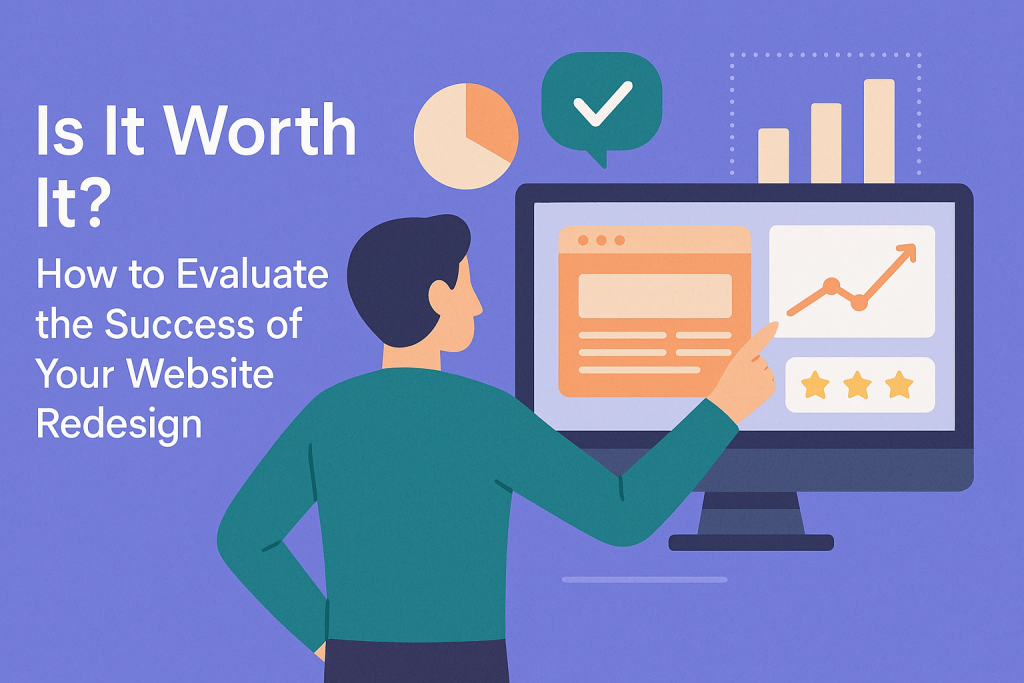
You’ve invested time, energy, and capital into website redesign services, maybe even revamped your brand entirely. But now that your new site is live—what’s next? Was the investment worth it? A website redesign is more than a visual facelift. It’s a strategic move aimed at boosting performance, enhancing user experience, and increasing conversions. However, to ensure you’ve actually moved the needle, you must measure success through clear, actionable KPIs. In this blog, we’ll explore the most effective ways to evaluate your redesign and determine whether it delivered true ROI—or just pretty pixels. 1. Set Clear Goals Before You Launch The first step to evaluating success is knowing what you’re measuring against. Every redesign should be aligned with specific business objectives. Common Goals Include: If your redesign didn’t begin with goal-setting, start now by defining what “success” looks like for your brand. 2. User Experience Metrics: Are Visitors Enjoying the New Design? User Experience (UX) is at the forefront of every effective redesign. Good design guides users toward actions—great design makes those actions frictionless. Key UX KPIs: If these metrics improved, then your custom web development and UX decisions are paying off. 3. Conversion Rates: Is the New Design Driving Action? The primary goal for most websites is to convert visitors—whether that means purchases, sign-ups, downloads, or form submissions. Comparing pre- and post-redesign conversion rates is critical. Metrics to Watch: Tip: Use A/B testing tools like Google Optimize to experiment with CTA placements, layouts, and messaging post-redesign. 4. SEO Performance: Did Your Rankings Survive the Makeover? A poorly executed redesign can sabotage search engine visibility. A well-executed one will maintain or even enhance it. SEO Metrics to Evaluate: Working with a developer skilled in responsive website design ensures mobile-first optimization, which is now critical for Google rankings. 5. Mobile Responsiveness: Is It Truly Mobile-First? With more than half of global traffic coming from mobile, your redesign must excel on smartphones and tablets. Test With: If mobile bounce rates have dropped and engagement has increased, your responsive website design is doing its job. 6. Website Speed: Faster = Better Speed kills—especially slow websites. Site performance plays a major role in both UX and SEO. Use Tools Like: Improve By: If your bounce rate is dropping and conversion rate is rising, performance upgrades from your website redesign services are likely a key factor. 7. Heatmaps and Session Recordings: Watch Real Users in Action Numbers are valuable, but behavioral tools offer goldmines of insight. Tools to Use: Watch how users navigate, where they get stuck, and where they click. These qualitative insights validate your redesign decisions—or highlight where tweaks are needed. 8. Accessibility Improvements: Inclusive Design = Better Results Designing for accessibility not only expands your audience—it often leads to better UX for everyone. Evaluate: Accessibility improvements can indirectly impact bounce rate, engagement, and conversion rates—especially on forms and navigation menus. 9. Technical Health: Is Your Backend Built to Last? A polished front end needs a robust back end. Quality custom web development ensures fast load times, fewer errors, and a smoother user journey. Key Checks: If your site is throwing fewer errors and your time-to-first-byte (TTFB) is faster, the backend overhaul was a win. 10. ROI: The Ultimate Success Indicator All your metrics feed into one final judgment: return on investment. Did the money you spent on redesign actually increase revenue or leads? Formula:ROI = (Net Profit from Redesign – Cost of Redesign) / Cost of Redesign x 100 Track long-term benefits like: A high ROI means your website redesign services investment was absolutely worth it. 11. Stakeholder and Customer Feedback: Gut-Checks Matter Too Don’t ignore qualitative feedback. What do customers, clients, and internal teams say about the new design? Collect Feedback From: Sometimes the clearest signals of success come from the people actually using your site. Measure What Matters, Then Iterate The only way to know if your redesign was “worth it” is by measuring real results. Evaluate success based on a mix of hard data and human feedback. Look beyond the aesthetics and dive deep into UX, SEO, performance, and ROI. At SpeedDot360, our website redesign services, responsive website design, and custom web development ensure your digital investment pays dividends. We don’t just design websites—we build platforms that drive growth.
Marketing Stats You Must Know in 2025
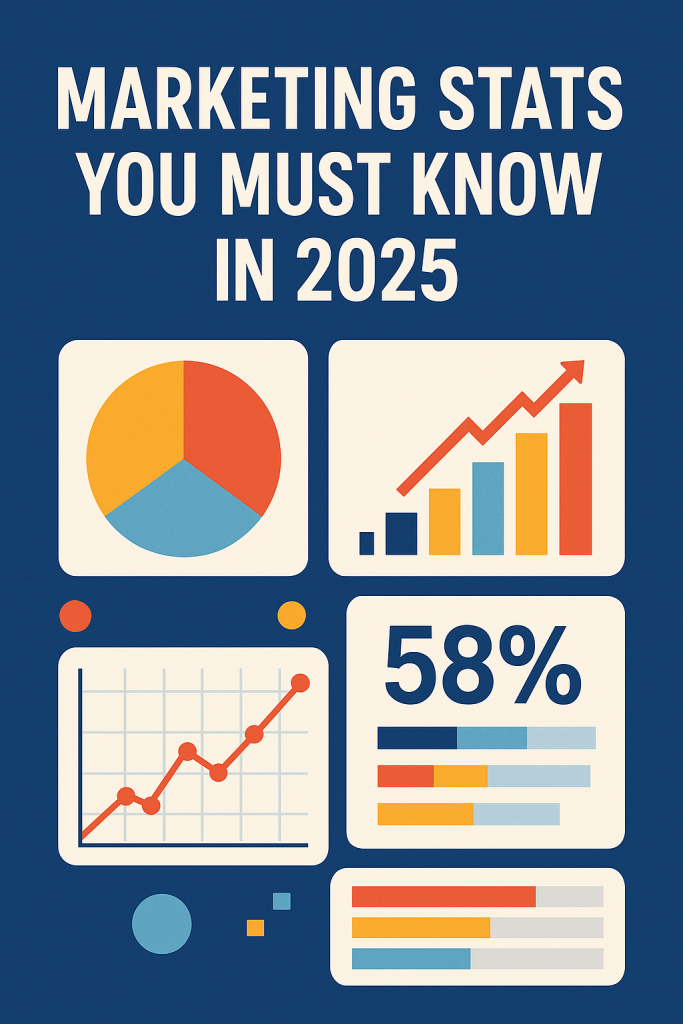
Marketing is more data-driven than ever, and staying ahead in 2025 means understanding the key statistics shaping digital strategies. From social media management to PPC advertising management, brands must adapt to emerging trends and evolving consumer behaviors to remain competitive. This article explores the most crucial marketing statistics for 2025, offering insights into digital advertising, content strategies, social media, email marketing, and more. Whether you’re a marketer, a business owner, or part of a content marketing agency, these numbers will guide your decision-making in the year ahead. The State of Digital Marketing in 2025 Digital marketing is continuing its rapid evolution, with businesses increasing their online advertising budgets to engage consumers effectively. Here are some of the key stats defining the industry: With digital advertising growing, businesses must invest in AI-driven strategies, data analytics, and targeted advertising to maximize ROI. Social Media Marketing: The Driving Force of Digital Strategies Social media remains a powerhouse for customer engagement, brand awareness, and sales. Platforms continue to evolve, and businesses must stay agile to keep up with changing trends. To stay competitive, businesses should focus on social media management, leveraging paid and organic strategies to enhance their digital presence. Email Marketing: Still One of the Highest ROI Channels In the evolving world of instant messaging apps and social media, email marketing remains a prominent digital marketing channel. Businesses that invest in automated, data-driven email marketing campaigns will see better customer engagement and higher conversion rates. Maximizing ROI with Paid Search With increasing competition in digital marketing, PPC advertising management is more crucial than ever for businesses aiming for higher conversions. For businesses looking to scale, PPC advertising management should focus on data-driven strategies, A/B testing, and AI-powered ad optimizations. SEO & Content Marketing: The Key to Long-Term Growth SEO and content marketing continue to thrive for organic visibility and brand authority. As search algorithms become more advanced, businesses need to invest in high-quality, intent-driven content. Businesses working with a content marketing agency should prioritize evergreen content, SEO-optimized blogs, and multimedia integration to improve organic traffic. AI and Automation: The Future of Marketing Efficiency AI is reshaping the marketing landscape by improving efficiency, personalization, and customer experiences. Marketers should embrace AI-powered automation tools to enhance efficiency and drive better results across digital channels. Capturing the Mobile-First Audience With mobile usage continuing to rise, brands must prioritize mobile-first marketing strategies. For businesses, optimizing their digital assets for mobile-first experiences will be critical to staying relevant. Video Marketing: Dominating the Digital Space Video continues to be one of the most engaging content formats, with consumers preferring visual storytelling over static content. To stay ahead, businesses should invest in high-quality video content to enhance brand storytelling and audience engagement. Conclusion Marketing in 2025 is all about leveraging data, automation, and personalization to create effective digital campaigns. By staying informed about these marketing statistics, businesses can make strategic decisions that drive growth, engagement, and revenue in 2025.
The Right Use Of AI In Digital Marketing
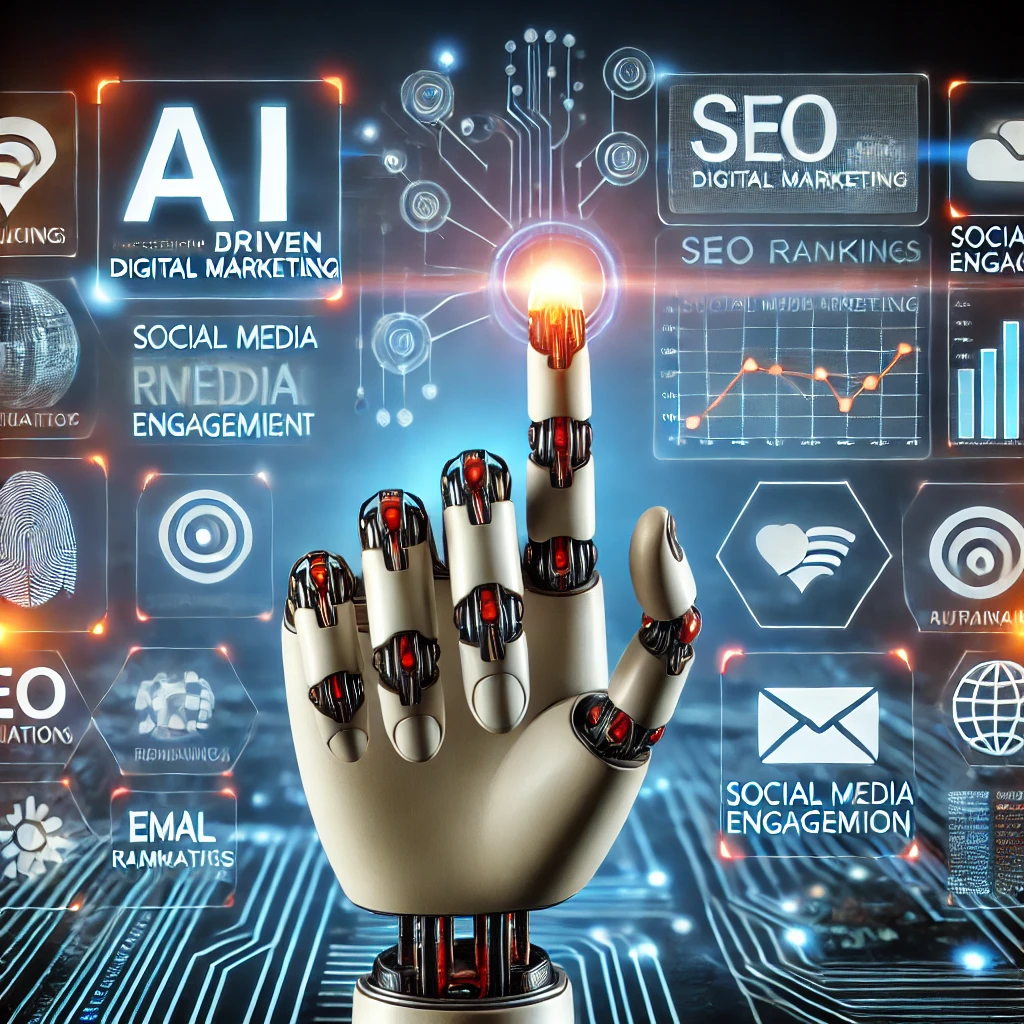
Artificial Intelligence (AI) came into our lives with a revolutionary change, commenced in a simple world, and has now set a trend that is no longer a futuristic concept; AI has changed how we do our work and has essentially transformed the digital marketing landscape as well. Brands use AI for content generation, SEO, PPC advertising management, and customer engagement. However, as AI becomes more embedded in marketing, ethical concerns arise about transparency, privacy, and authenticity. For businesses that rely on SEO optimization services, AI-driven automation can streamline processes, but over-reliance on AI-generated content and unethical data use can damage credibility. This article explores the ethical and strategic use of AI in digital marketing, ensuring that brands can harness its potential without compromising integrity. The Fine Line Between Innovation and Manipulation AI is evolving how businesses interact with consumers, but where should the line be drawn? The ethical use of AI means ensuring that algorithms enhance rather than manipulate user experiences. Marketers must ensure AI tools are used transparently and fairly, avoiding deceptive practices that could mislead customers or exploit their data. AI-driven marketing should prioritize user trust, ensuring that automation enhances experiences rather than replaces genuine human interaction. Ethical AI respects user autonomy, avoids manipulative tactics, and provides value-driven engagement rather than focusing solely on conversions. Key Ethical Considerations: Transparency in AI-driven decision-making Avoiding AI-generated misinformation Preventing AI Bias in advertising and content delivery Balancing Automation with Authenticity AI tools like ChatGPT and Jasper can assist in content creation, but blindly using AI-generated content can lead to plagiarism, misinformation, and generic output. Content marketing agencies should balance AI efficiency with human oversight to ensure that content remains original, engaging, and contextually accurate. AI can be leveraged to generate first drafts, analyze trends, and optimize readability, but final content should always be reviewed by human editors. While AI can speed up production, ethical concerns arise when AI content is misrepresented as human-written or used to create misleading narratives. Best Practices for Ethical AI Content Creation: Ensure AI-generated content is reviewed and edited by humans Avoid misleading AI-generated narratives Disclose AI involvement in content production Use AI to assist, not replace, creative content teams Enhancing Search Without Gaming the System SEO has evolved with AI, making keyword research services more efficient. AI tools analyze user intent and suggest optimized keywords, but some businesses misuse AI to manipulate rankings with keyword stuffing or AI-generated spam content. Ethical AI in SEO ensures that search results remain valuable to users. AI should be used for data-driven insights, improving search intent alignment, and refining content strategies rather than exploiting algorithm loopholes. Ethical SEO Practices with AI: Use AI-driven keyword insights responsibly Avoid auto-generated articles with no human review Prioritize high-quality, informative content Leverage AI for intent-based content optimization Transparency and Fair Bidding Practices PPC advertising management relies heavily on AI for real-time bidding and ad targeting. While AI optimizes campaigns, there is a risk of manipulative practices such as inflated ad engagement or non-transparent targeting. Using AI in PPC should focus on creating a fair and efficient bidding system that maximizes ROI while respecting ethical standards. Marketers should ensure that AI-powered ad placements provide genuine value and do not mislead audiences with overly optimized messaging. Ensuring Ethical AI Use in PPC: Clearly disclose AI-driven ad placements Avoid misleading AI-generated ad copies Respect user privacy when targeting ads Ensure fair bidding practices to prevent price manipulation Ethical Outreach vs. Automation Abuse AI can streamline link-building services by identifying high-quality backlink opportunities, but mass AI-generated outreach often results in spammy, irrelevant links that hurt credibility. Marketers should ensure that AI is used to build meaningful partnerships rather than automate outreach without context. Ethical link-building should prioritize genuine connections and high-authority sources rather than excessive automation. Ethical Link Building with AI: Use AI for research, not for mass automation Personalize outreach efforts with human input Avoid black-hat AI tactics like fake link networks Give strict attention to quality over quantity when building backlinks Personalization Without Privacy Invasion AI-driven chatbots enhance customer interactions, but they must not deceive users into thinking they are interacting with humans. Transparency is key, and brands should avoid using AI-generated conversations to manipulate or mislead customers. AI chatbots should enhance user experience through relevant, quick responses while allowing seamless human escalation when necessary. Brands should also prioritize ethical data collection, ensuring chatbots do not store unnecessary user information. Best Practices for Ethical AI Chatbots: Clearly indicate chatbot interactions Use AI for assistance, not manipulation Ensure chatbots respect customer privacy Allow human intervention when necessary Ensuring Compliance in Digital Marketing AI-driven analytics provide valuable insights, but ethical concerns arise when AI is used to track user behavior without consent. Organizations must comply with data protection rules like GDPR and CCPA. In addition, transparency in data collection and AI usage is essential to maintaining consumer trust. Businesses should prioritize security, anonymization, and explicit consent when handling user data. Key Privacy Considerations: Obtain explicit user consent before collecting data Anonymize data when possible Be transparent about AI’s role in data analysis Implement data protection measures to prevent breaches Ethical Influencer Targeting & Engagement AI helps brands identify influencers and analyze engagement, but some brands misuse AI-generated engagement, such as fake followers and auto-generated comments. The ethical use of AI in social media marketing ensures genuine audience interactions and prevents misleading metrics. AI should be used to enhance engagement strategies rather than fabricate false audience growth. How to Use AI Ethically in Social Media: Avoid AI-generated fake engagement Disclose AI-driven influencer partnerships Use AI insights for authentic audience engagement Ensure AI does not manipulate social sentiment How to Use AI Without Losing Credibility? Consumers value authenticity, and over-reliance on AI can erode trust. Ethical AI practices ensure that brands maintain credibility and foster long-term relationships with their audience. Brands should be upfront about AI’s role in their marketing strategies and avoid using AI to manipulate user behavior or perceptions. Building Consumer Trust with AI: Use AI as




